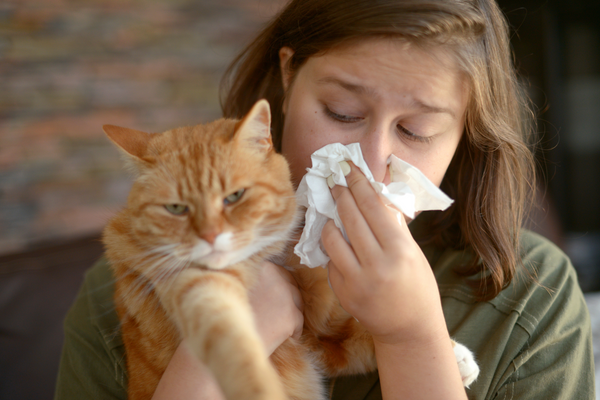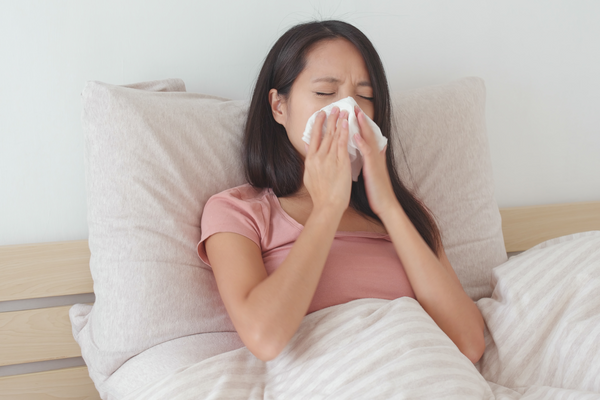How to Care for Your Face Mask

At The Ecology Works, we are passionate about the health and well-being of people, which is why we wanted to talk about a topic that lately affects us all: face masks. Depending on where you live and work, it’s likely that cloth face masks are recommended for use in public settings. For people who aren’t in the medical field, cloth face masks are a practical and affordable way to help curb the spread of COVID-19, the disease caused by the novel coronavirus (SARS-CoV-2) that has led to the global pandemic.
Over the past few months, you might have bought or made cloth face masks or coverings for yourself and your family. Here are some tips on how to best care for them.
Let’s Talk About Face Masks & COVID-19
The main purpose of face masks is to keep normal civilians from unknowingly spreading COVID-19 to others. If a person happens to be infected, cloth face masks should be able to contain most of the respiratory droplets generated from coughing or sneezing.
Note: If you’re showing any symptoms of COVID-19, immediately self-quarantine and seek medical guidance.
Medical workers require specific personal protective equipment (PPE) because of their increased risk exposure to COVID-19. N95 respirators and surgical masks should be reserved for these essential frontline workers, as well as for patients.
For those of us who don’t require advanced PPE, the CDC mask guidelines are as follows:
- Masks should be secured with ties or ear loops.
- Masks should consist of multiple layers of fabric.
- Masks should fit snugly and comfortably against the face, completely covering the nose and mouth.
- Masks should never restrict breathing.
- Masks should be able to withstand washing without damage or losing their shape.
How Many Face Masks Do I Need?
Proper cloth face masks can help reduce the spread of viruses, which is especially true when people are asymptomatic and don’t know if they’re contagious. It’s a good idea to have at least two masks. That way, you’ll have a fresh mask ready if one is in the wash.
You’ll also want to consider your schedule and your lifestyle. Ideally, you’re staying at home most of the time. But whenever you’re in any sort of community setting (like the grocery store, an office, at school, on public transportation, the pharmacy, etc.) it’s important to use some kind of face covering that completely covers your nose and mouth.
What’s the Best Way to Remove My Face Mask?
Keep your mask on until you have finished your trip, errand, or work shift. You can remove it outside (once you are away from others) or in your car on your way home. Don’t forget to bring your mask inside to be cleaned. If you wait to take your mask off until you have returned home, it may be easier to put it directly into the laundry.
Here’s how to best remove your mask:
- First, wash your hands with soap and warm water or use alcohol-based hand sanitizer containing at least 60% alcohol if soap and water aren’t available.
- Don’t touch the front of the mask or your face.
- Carefully remove your mask by grasping the ear loops or untying the ties. For masks with a pair of ties, unfasten the bottom ones first, then the top ones.
- If your fabric mask has disposable filters, remove them and throw them away. Fold the mask and put it directly into the laundry or into a washable bag for laundering.
- Clean your hands again.
How Often Should I Clean My Face Mask or Covering?
Ideally, your face mask should be washed after every wearing to reduce the spread of the coronavirus or other pathogens. Medical and frontline workers – as well as those who are unable to socially distance – should put on new masks every few hours. The wear of each mask can be extended by only touching it with washed or properly sanitized hands.
How Do I Clean My Face Mask or Covering?
- Generally, bandannas, face scarves, and masks made of fabric, such as cotton, can be washed along with your regular laundry using hot water and a hypoallergenic laundry detergent.
- Remove elastic ties or bands before washing no-sew masks.
- Tumble masks in the dryer or use a hair blow dryer, both on the hottest settings.
- Do not microwave or boil masks in water.
- Store clean masks in a clean, dry place when you aren’t using them.
- NOTE: Disposable, blue surgical masks cannot be laundered or cleaned and should be carefully removed and thrown away after use.
If you do happen to have an N-95 respirator mask, you may be able to use your electric cooker to sanitize it. More on that here.
How Long Can the Virus Last on Fabric?
There is still much to learn about SARS-CoV-2 and COVID-19, the disease the virus causes. Based on what is currently known, the virus is highly contagious. The spread from person-to-person most frequently happens among close contact, within about six feet. When someone who is infected coughs or sneezes, they send respiratory droplets containing the virus into the air. A healthy person can then breathe in those droplets and become infected. Virus-carrying respiratory droplets can also land on objects and surfaces. It’s possible for someone to then catch the virus by touching a contaminated surface or object then touching their eyes, nose, or mouth.
Currently, we know that SARS-CoV-2 can survive on cardboard for up to 24 hours and 2-3 days on plastic and stainless steel. In perfect laboratory conditions, the virus can survive for up to 28 days. However, not much is currently known about how long the novel coronavirus can survive on fabric. Until we learn more, it’s best to be proactive and wash cloth masks after every use to remove possible pathogens.

Along with mask wearing and social distancing, cleaning, sanitizing, and disinfecting high-touch surfaces is another practical way to reduce the spread of COVID-19 and other pathogens. Our premier disinfectant product, Vital Oxide, has been approved by the Environmental Protection Agency (EPA) for use against SARS-CoV-2, the novel coronavirus that causes the disease COVID-19. Learn how to use Vital Oxide to clean, sanitize, and disinfect here.
Final Thoughts
From wearing masks to cleaning and disinfecting high-touch surfaces, we know that you’re taking extra precautions to protect your family. From The Ecology Works family to yours, we hope that you all stay safe and healthy through this trying time. If you have any questions about cleaning, disinfecting, or anything else, please feel free to Contact Us or message us on Facebook. We’re all in this together and we’re to help.





